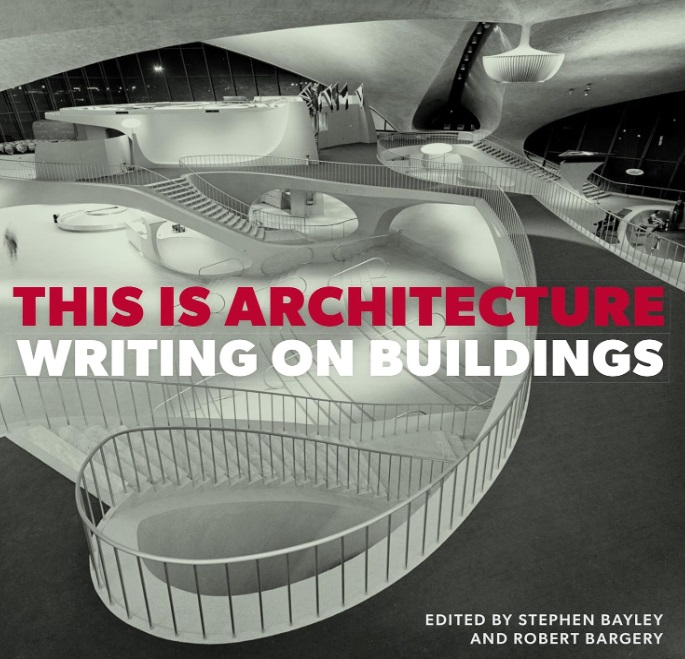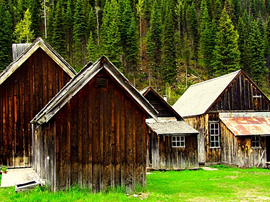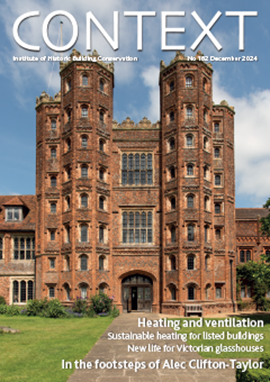This is Architecture: writing on buildings
This is Architecture: writing on buildings. Edited by Stephen Bailey and Robert Bargery, Unicorn, 2022, 112 pages, 48 colour and black-and-white illustrations.
The Royal Fine Art Commission (RFAC) was established in 1987 to advise the government on matters of public interest and aesthetics. It was replaced by the Commission for Architecture and the Built Environment (CABE) in 1999, which was later merged with the Design Council. Strangely, the RFAC is survived by the Royal Fine Art Commission Trust, a charity that was set up in association with the RFAC to promote good design. Its Building Beauty Awards have been its principal activity over the past two years. It has also turned to commissioning books.
This is Architecture is edited by Stephen Bayley, chair of the trust, and Robert Bargery, its director. Their intention is to ‘enhance popular appreciation of architecture and to celebrate those who are architecture’s eloquent champions.’ They do this by selecting examples of writing about architecture by a wide variety of authors, over 90 in number, chosen for the quality of their writing alone. Their criterion for inclusion is writing that is clear, instructive and (ideally) entertaining; and they have excluded the self-consciously clever and, above all, the turgid and jargon laden. Not all the subjects are great buildings, some are vernacular or quite commonplace, and not all the writers are associated with architecture.
Obvious choices such as Ruskin, Summerson, Jane Jacobs, Pevsner, Reyner Banham, Robert Byron and Goethe are all there but so too are Virginia Woolf, Guy de Maupassant, Trollope, Ouida, André Gide and Will Self, all of whom, sometimes surprisingly, have something interesting to say about buildings.
Several of the pieces are derogatory: Banham, who admires the boldness of James Stirling’s Cambridge History Faculty, sees its practical flaws and predicts with irony that in time it will be accepted by Cambridge as part of its heritage, and then no one will have the guts to pull it down when it has outlived its useful life. SG Sebald’s critique of the Bibliothèque Nationale, Paris, included in his novel Austerlitz, is a hundred times more damning. There is a moving extract from The Road to Wigan Pier by George Orwell, who describes the ‘lunar landscape of slagheaps’ and the ‘pools of stagnant water that had seeped into the hollows caused by the subsidence of ancient pits.’
But mostly the selected writers display admiration for their subjects and in their varied perspectives can open our eyes to new ways of seeing. Attractively designed, and with full-page photographs, it is a book to be dipped into, and worth reading more than once.
This article originally appeared as ‘Eloquent champions’ in the Institute of Historic Building Conservation’s (IHBC’s) Context 179, published in March 2024. It was written by Peter de Figueiredo, reviews editor of Context.
--Institute of Historic Building Conservation
Related articles on Designing Buildings Conservation.
IHBC NewsBlog
SAVE celebrates 50 years of campaigning 1975-2025
SAVE Britain’s Heritage has announced events across the country to celebrate bringing new life to remarkable buildings.
IHBC Annual School 2025 - Shrewsbury 12-14 June
Themed Heritage in Context – Value: Plan: Change, join in-person or online.
200th Anniversary Celebration of the Modern Railway Planned
The Stockton & Darlington Railway opened on September 27, 1825.
Competence Framework Launched for Sustainability in the Built Environment
The Construction Industry Council (CIC) and the Edge have jointly published the framework.
Historic England Launches Wellbeing Strategy for Heritage
Whether through visiting, volunteering, learning or creative practice, engaging with heritage can strengthen confidence, resilience, hope and social connections.
National Trust for Canada’s Review of 2024
Great Saves & Worst Losses Highlighted
IHBC's SelfStarter Website Undergoes Refresh
New updates and resources for emerging conservation professionals.
‘Behind the Scenes’ podcast on St. Pauls Cathedral Published
Experience the inside track on one of the world’s best known places of worship and visitor attractions.
National Audit Office (NAO) says Government building maintenance backlog is at least £49 billion
The public spending watchdog will need to consider the best way to manage its assets to bring property condition to a satisfactory level.
IHBC Publishes C182 focused on Heating and Ventilation
The latest issue of Context explores sustainable heating for listed buildings and more.

















